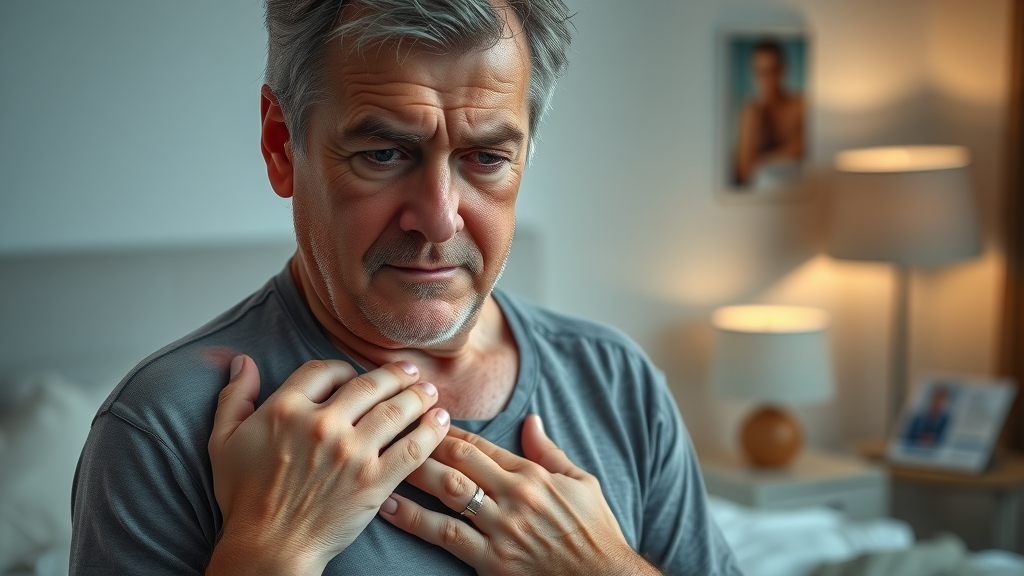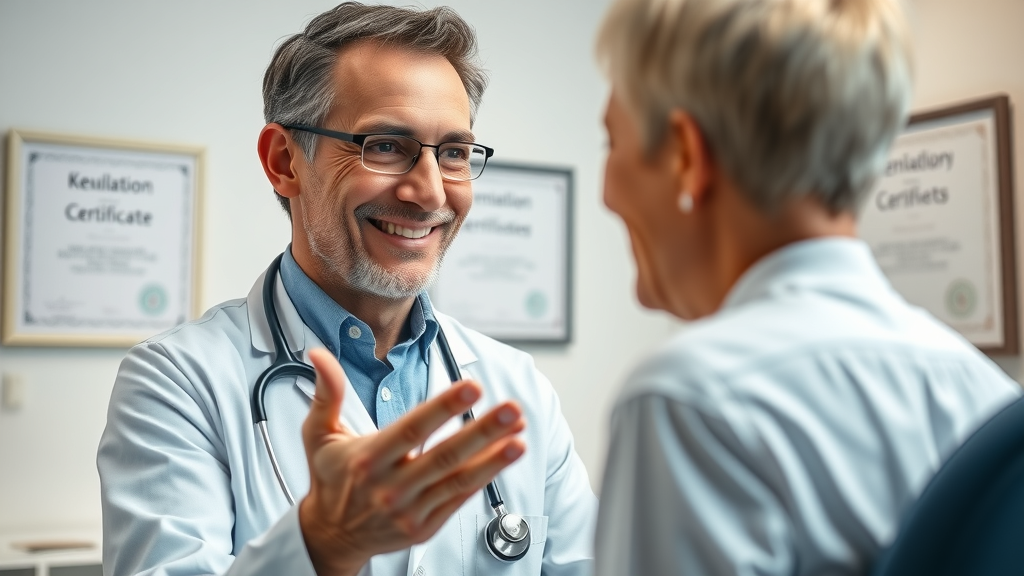Are you confident in your ability to spot skin issues before they escalate? Mastering a skin care self-exam empowers you to detect problems early, safeguarding your health and boosting your confidence. Ready to learn simple, effective techniques that could make all the difference?

Why Skin Care Self-Exam Matters for Early Detection
A regular skin care self-exam can dramatically increase your chances of identifying skin issues such as melanoma, basal cell carcinoma, or squamous cell carcinoma in their early stages, when they are highly treatable. According to the American Academy of Dermatology, early detection of skin cancer through routine self-checks can save lives. This proactive approach allows you to find skin cancer or other suspicious changes before they become dangerous, especially if you check your skin thoroughly every month.
During a skin care self-exam, you familiarize yourself with your unique skin condition and the normal pattern of moles, freckles, and blemishes. By noting any signs of skin changes—like new growths, spots, or itching—you become your own first line of defense against potential health risks. This practice is especially important for anyone with family history of skin cancers, a history of sunburns, or increased risk of skin cancer due to genetic factors or lifestyle choices.
"Early identification of skin changes can be lifesaving—regular skin care self-exams are your first line of defense." – Leading Dermatologist
Recognizing the Signs of Skin Issues During Your Skin Care Self-Exam
Knowing what to look for during a skin care self-exam greatly improves your ability to spot issues in their early stages. Keep an eye out for signs of skin cancer such as new moles, growths, or changes in existing spots. The common warning signs include asymmetry (one half unlike the other), blurred or irregular borders, multiple or unusual colors, spots larger than a pencil eraser in diameter, or any lesion that seems to be evolving over time.
Other skin changes to watch for include scaly patches, persistent sores, itching, tenderness, or lesions that bleed easily. Even minor changes may signal underlying problems, so take note of any changes—no matter how small—especially in sun-exposed areas and hidden spots such as the back of your neck, scalp, or genital area. Regular self-exams are crucial for early detection and intervention.
While mastering your skin care self-exam is vital for early detection, it's equally important to stay informed about other rising health concerns that can impact your well-being. For example, understanding the latest updates on syphilis testing during pregnancy and the increasing rates of certain cancers among young adults can help you take a more comprehensive approach to your health monitoring.
Understanding the Risk of Skin Cancer with Infrequent Skin Care Self-Exam
Skipping regular skin care self-exam sessions increases the risk of letting dangerous skin changes go unnoticed. Skin cancer, including melanoma, is most curable when found early, but many cases are discovered at an advanced stage because the warning signs were missed. According to data from the American Academy, over 5 million skin cancers are diagnosed annually in the United States, and delayed detection significantly impacts treatment outcomes.
Those who infrequently perform a skin exam might miss subtle, yet important, signs—especially in hard-to-see areas. This gap in monitoring allows skin conditions to progress unchecked, which can lead to more invasive procedures and, in severe cases, less favorable outcomes. Staying vigilant with monthly checks is a proven way to beat the odds and reduce the long-term risk of skin cancer.

Preparing for an Effective Skin Care Self-Exam
The effectiveness of your skin care self-exam depends on preparation and having the right tools at hand. Start by choosing a well-lit area—natural daylight works best—so you can observe subtle changes in skin tone, color, and texture. Gather essentials such as a mirror to check both the front and back of your body, a hand mirror for hard-to-see places, a ruler for measuring spots, and a camera or phone to take photos for tracking changes over time.
Consistency is key; make your self-exam a monthly routine. Set aside dedicated time when you won’t be rushed, such as after a shower when your skin is clean and free of makeup or lotions. Keeping a notepad or journal to record your observations each time helps you spot any new or evolving skin changes. Being organized, thorough, and systematic ensures no important area goes unchecked and increases your chances of finding skin cancer early.
Best Places and Tools for a Skin Care Self-Exam
For a comprehensive check, select a spot with ample lighting—bathrooms with large mirrors and natural daylight are ideal. You’ll also want to use a hand mirror to inspect areas like the back of your neck, scalp, and lower back. Standing or sitting in front of a full-length mirror gives you a clear view of your entire body.
Among the recommended tools, a flexible ruler lets you measure and monitor spot size over time. A camera or smartphone is essential for documenting changes, while a notepad or a digital journal helps you maintain a written record of your findings. Some people use skin-mapping apps, but traditional notes and photos work just as well for accurate tracking. Remember, even areas not regularly exposed to the sun—such as your genital area or soles of the feet—should be included in your self-exam for the most effective cancer screening.
Items Needed: Well-lit Room
Mirror
Ruler
Notepad
Camera
When to Perform a Skin Care Self-Exam and How Often
Medical experts, including the American Academy of Dermatology, recommend performing a skin care self-exam once a month. This frequency allows you to become familiar with your skin’s normal appearance and detect subtle changes before they escalate. Scheduling your self-exam at the same time each month—such as the first weekend—makes it easier to remember and helps establish a consistent routine.
You should also be prepared to repeat your exam sooner if you notice anything unusual, such as a new spot or a sudden change in an existing lesion. Individuals at higher risk—including those with a history of skin cancer, fair skin, frequent sunburns, or a family history of melanoma—should be extra vigilant. The key to effective prevention is checking your skin regularly and promptly following up on any changes you observe.

Step-by-Step Guide: How to Perform a Skin Care Self-Exam
Knowing how to perform a skin care self-exam is essential for early detection of issues. With a systematic approach, you can ensure no area is missed. Start with clean, dry skin and adequate lighting. Stand or sit before a full-length mirror and use a hand mirror as needed for hard-to-see places. Work from head to toe and examine every part of your body—even those areas not often exposed to sunlight.
Document any new or changing spot, sore, or lesion. Take your time, and don’t rush—an effective exam takes just a few focused minutes. If you need a refresher, resources from the American Academy of Dermatology or your dermatologist’s office can guide you through the process. Consistency and attention to detail are the best tools for catching potential warning signs early.
Checking Your Skin Thoroughly During the Skin Care Self-Exam
To check your skin thoroughly, begin with your face, including the nose, lips, mouth, and ears (front and back). Move to the scalp, sectioning hair to examine the skin underneath. Progress to your neck, chest, and torso, lifting breasts if necessary to examine the underlying skin. Inspect your arms, hands, fingers (including between fingers and under nails), then your legs and feet (including soles and between toes).
Don’t overlook hidden areas like the back, buttocks, genitals, or the back of your neck. Use a hand mirror to check these spots—enlist a family member for assistance if you’re comfortable. Document the position, size, color, and texture of any differences or concerns. Over time, referencing your notes and photos can help you identify new or evolving changes, improving your odds of finding skin cancer early.
Start with Face and Scalp
Move to Torso
Inspect Arms and Legs
Don’t Miss Hidden Areas

Identifying the Signs of Skin Cancer Early in a Skin Care Self-Exam
The primary goal of a skin care self-exam is to catch signs of skin cancer in the early stages. Melanoma is the deadliest form, but it’s highly treatable when detected early. Other common cancers—basal cell carcinoma and squamous cell carcinoma—rarely spread but can cause extensive local damage if not caught soon. Recognizing suspicious spots and understanding the warning indicators equips you to take action before it’s too late.
To find skin cancer early, familiarize yourself with common presentations and consult educational materials from the American Academy of Dermatology. Monthly self-exams, tracked over time, form an effective component of your overall skin cancer screening strategy and can alert you to problems before symptoms are noticeable.
Skin Cancer: How to Spot Melanoma with the ABCDEs
The ABCDEs of melanoma are universally recommended by professionals to identify dangerous moles during your skin care self-exam. This method focuses on five crucial characteristics that signal a need for medical evaluation. Melanomas are often asymmetrical, have irregular or blurred borders, display more than one color, are larger than a pencil eraser in diameter, or change rapidly over weeks or months.
Spotting these traits early significantly increases the odds of successful treatment. Always check your skin for the ABCDEs and consult a professional for anything suspicious. Remember, some melanomas may not fit all of these criteria—any change or new spot that seems out of place should merit closer inspection and possible dermatologist follow-up.
ABCDE's of Melanoma: |
What to Look For |
Feature |
Description |
|---|---|
A: Asymmetry |
One half doesn’t match the other |
B: Border |
Edges are irregular, ragged, notched, or blurred |
C: Color |
Color is not the same all over (includes shades of brown, black, pink, red, white, or blue) |
D: Diameter |
Larger than 6mm (about the size of a pencil eraser) |
E: Evolving |
Spot changes in size, shape, or color |
Other Signs of Skin Cancer to Watch For: Basal and Squamous Cell Carcinoma
While melanoma is often the focus, basal cell carcinoma and squamous cell carcinoma are also frequent forms of skin cancer. Basal cell cancers may appear as pearly or waxy bumps, flesh-colored lesions, or persistent open sores that heal and recur. Squamous cell carcinoma might present as firm red nodules, scaly patches, or sores that don’t heal. Both types commonly occur on sun-exposed areas like the face, ears, neck, and backs of hands.
If you discover any crusting, oozing, bleeding, or a lesion that just won’t go away, make an appointment for a skin cancer screening. Even small, painless bumps or rough patches may be early indicators. Including the genital area and soles of your feet when you check your skin ensures nothing is overlooked, which is critical for early-stage intervention. The earlier you find skin changes, the better the outcomes.

Documenting and Tracking Skin Changes During Each Skin Care Self-Exam
Accurate documentation is essential for effective skin care self-exam and catching skin changes that could signal skin cancer. Creating a systematic record of moles, spots, and lesions makes it easier to detect differences from one month to the next. Photos let you compare spots over time, while written notes help you capture changes in size, color, or texture that your eyes or memory might miss. When in doubt, having documentation to show your provider accelerates diagnosis and treatment.
Using a combination of photos, journals, and even body maps allows you to monitor every region closely. Capture pics of new or evolving spots from multiple angles for clarity. Mark areas of concern on a printed or drawn outline of your body. Organized records—and reviewing them with each self-exam—make it easier to spot subtle but crucial changes that could become problematic if ignored.
Creating a Skin Map for Your Skin Care Self-Exam
Mapping your skin is a proactive way to monitor every mole, blemish, and spot during your skin care self-exam. Start by sketching a simple outline of your body or using a template from a trusted resource like the American Academy of Dermatology. Mark the location and size of existing moles or suspicious findings each month, and add notes about their color, shape, and texture.
Taking routine photos from consistent angles and keeping a dedicated journal helps you mark changes over time. This record can be easily shared with your dermatologist, giving a comprehensive overview and supporting faster, more accurate diagnosis. Consider using sticky notes on your map for concerns that need follow-up. Over time, your skin map becomes a powerful tool in your self-exam routine and your skin’s lifelong journey.
Tips: Take Photos
Maintain a Journal
Mark Changes Over Time

When to See a Dermatologist After Your Skin Care Self-Exam
While monthly exams are useful for early detection, certain findings call for a prompt visit to a dermatologist—especially a doctor who specializes in evaluating skin. Don’t wait if you spot a new, changing, or unusual mole, sore, or lump that grows, itches, bleeds, or doesn’t heal. These could signal skin cancer early and warrant immediate professional evaluation for timely intervention and peace of mind.
Signs that should prompt a visit include growths that rapidly change in size, persistent itching or tenderness, spots with irregular borders or multiple colors, or sores that fail to heal after several weeks. Always listen to your instincts—if something looks or feels different, don’t hesitate to seek expert advice for a full assessment and possible biopsy.
"If you notice any new, changing, or unusual skin findings, consult your dermatologist without delay." – Board Certified Dermatologist

People Also Ask About Skin Care Self-Exam
How often should I perform a skin care self-exam?
It’s recommended to check your skin once a month, as this frequency gives you the best chance to find skin cancer or other changes at the earliest possible stage. Performing your self-exam regularly builds familiarity with your skin and helps you quickly detect anything that might be new or concerning, leading to better outcomes if intervention is needed.
What should I do if I find a suspicious spot during a skin care self-exam?
If you identify any new, changing, or unusual spot—especially one featuring the ABCDEs of melanoma, a persistent sore, or a non-healing lesion—schedule an appointment with a dermatologist right away. Document your findings with photos and notes, continue monitoring the area, and avoid self-diagnosing or delaying medical care, as early evaluation is crucial for cancer early detection and effective treatment.
Reducing Your Risk of Skin Cancer Through Regular Skin Care Self-Exams
Beyond monthly skin care self-exam routines, there are effective lifestyle choices to minimize your risk of skin cancer. Applying sunscreen daily—especially before sun exposure—protects against damaging UV rays. Wear protective clothing like hats and sunglasses, and seek shade or limit outdoor activity during peak sun hours (10 a.m. to 4 p.m.).
Teaching your family about the importance of regular skin cancer screening helps keep everyone safe. Encouraging consistent self-exams and good sun habits, especially in children, reduces lifetime risk and makes early detection a team effort. Prevention strategies and vigilance are your best allies in achieving lifelong healthy skin.
Lifestyle Tips for Lowering the Risk of Skin Cancer Through Skin Care Self-Exam
Apply Sunscreen
Wear Protective Clothing
Avoid Peak Sun Hours
Stay Alert with Regular Skin Care Self-Exam

Common Mistakes to Avoid in Skin Care Self-Exam
Overlooking Hard-to-See Areas
Not Tracking Changes
Ignoring Small or Unusual Spots
Infrequent Exams
FAQs: Skin Care Self-Exam and Skin Cancer Detection
Is a skin care self-exam enough to find all types of skin cancer?
No, while self-exams catch many suspicious spots and changes, they do not replace professional cancer screening or diagnosis. Some skin cancers may be subtle, develop in hard-to-see areas, or mimic benign conditions. Combine regular self-exams with annual dermatologist visits and notify your doctor promptly of any concerns for the most comprehensive protection.
What are the limitations of a skin care self-exam?
A skin care self-exam has some limitations—it may miss deeply rooted or inconspicuous cancers, and not all changes are visible or accessible. Inexperienced eyes might also overlook subtle distinctions between harmless and dangerous spots. That’s why consulting a dermatologist regularly and documenting your findings are crucial in supplementing your personal vigilance.
Key Takeaways: Mastering Skin Care Self-Exam to Find Skin Cancer Early
Early Detection Saves Lives
Monthly Exams Increase Your Chances
Track and Report All Changes
Partner with Your Dermatologist
Conclusion: Take Charge of Your Health with a Regular Skin Care Self-Exam
Building a habit of monthly skin care self-exam is one of the simplest and most effective steps you can take to protect your skin—and your health—throughout your life.
If you’re committed to proactive health, consider broadening your knowledge about early detection beyond skin care. Regular screenings for other conditions, such as vision health, can be just as crucial for long-term wellness. Discover why scheduling your next eye exam could be a game-changer for preserving your sight and learn about the hidden risks of glaucoma by exploring the importance of comprehensive eye exams for early disease detection. By integrating these preventive habits into your routine, you empower yourself to catch potential issues early and take charge of your overall well-being.
Sources
American Academy of Dermatology – https://www.aad.org/public/diseases/skin-cancer
American Cancer Society – https://www.cancer.org/cancer/skin-cancer.html
Centers for Disease Control and Prevention – https://www.cdc.gov/cancer/skin/basic_info/
Regular skin self-examinations are vital for early detection of skin issues, including skin cancer. The American Cancer Society provides a comprehensive guide on how to perform a skin self-exam, detailing the necessary steps and what to look for during the process. (cancer.org)
Additionally, the American Academy of Dermatology offers a step-by-step approach to conducting thorough skin checks, emphasizing the importance of regular self-exams in identifying potential skin cancers early. (aad.org) By incorporating these practices into your routine, you can enhance your ability to spot skin changes promptly and seek professional evaluation when necessary.
 Add Row
Add Row  Add
Add 




Write A Comment